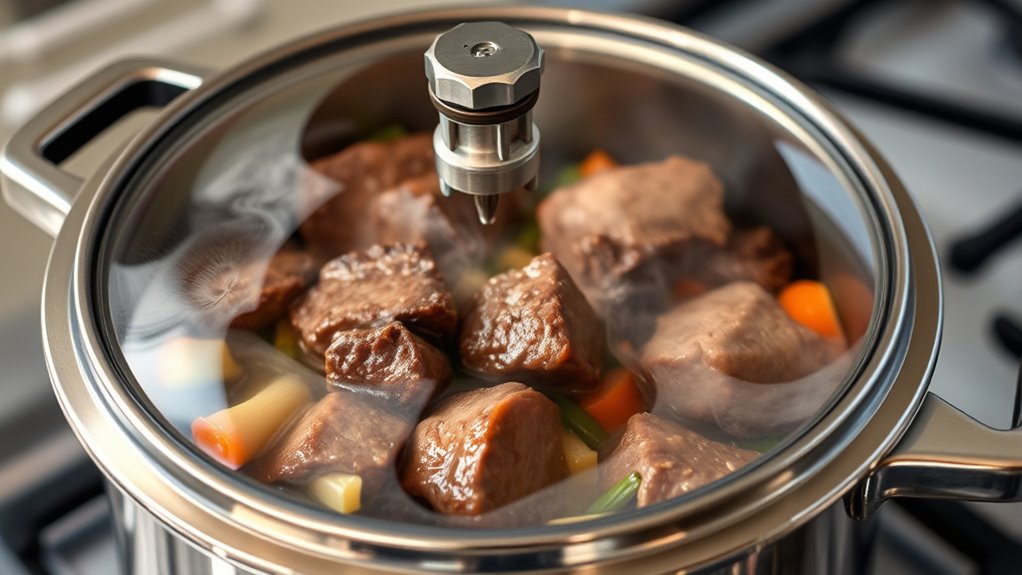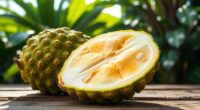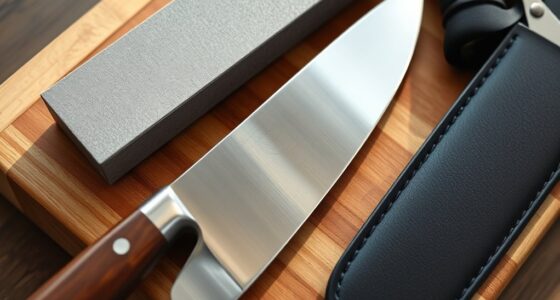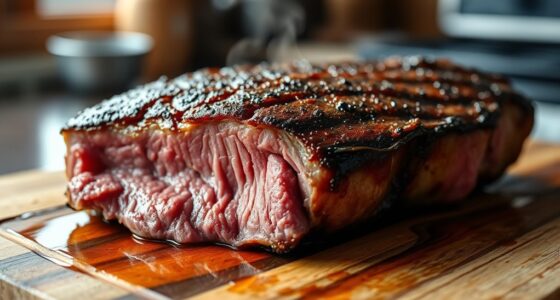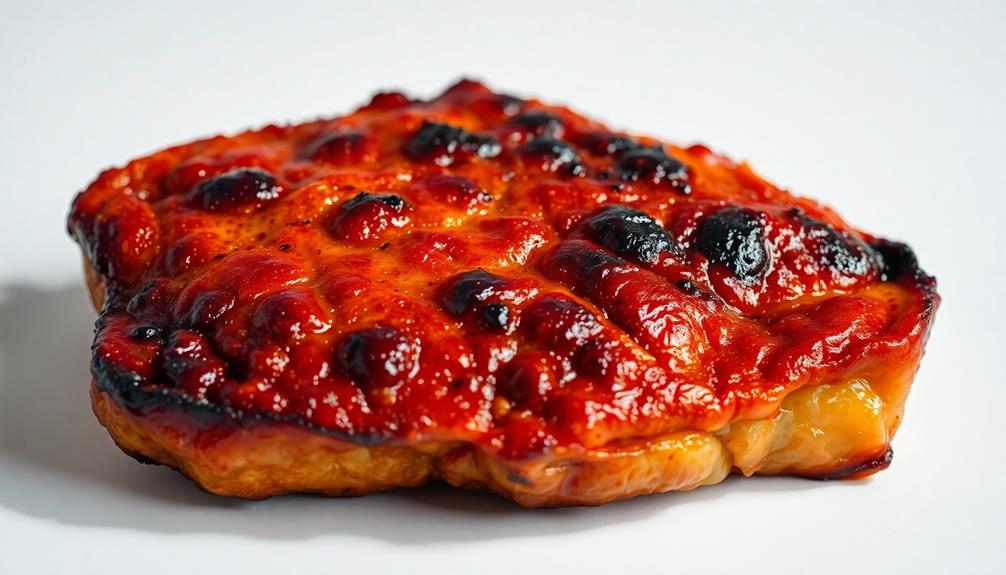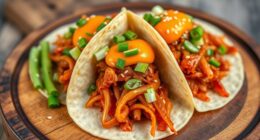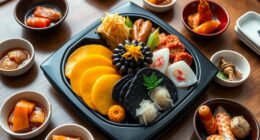Using a pressure cooker speeds up tough cuts by harnessing steam pressure to raise the boiling point of water above 212°F, allowing food to cook at higher temperatures. This intense heat and moisture break down connective tissues like collagen quickly while sealing in natural juices. The sealed environment prevents moisture loss, keeping meat tender and flavorful. Mastering pressure control and materials guarantees efficient, safe results. If you want to discover how pressure dynamics optimize cooking, keep exploring this fascinating technology.
Key Takeaways
- Increased steam pressure raises the boiling point, allowing higher cooking temperatures that tenderize tough cuts faster.
- The sealed environment retains moisture, preventing drying and ensuring meat stays juicy and tender.
- Elevated pressure enhances heat transfer via conduction and convection, speeding up collagen breakdown in tough fibers.
- Proper pressure control maintains consistent conditions, ensuring uniform cooking without over-drying the food.
- Advanced materials in pressure cookers improve pressure stability and heat distribution, optimizing tenderization and moisture retention.
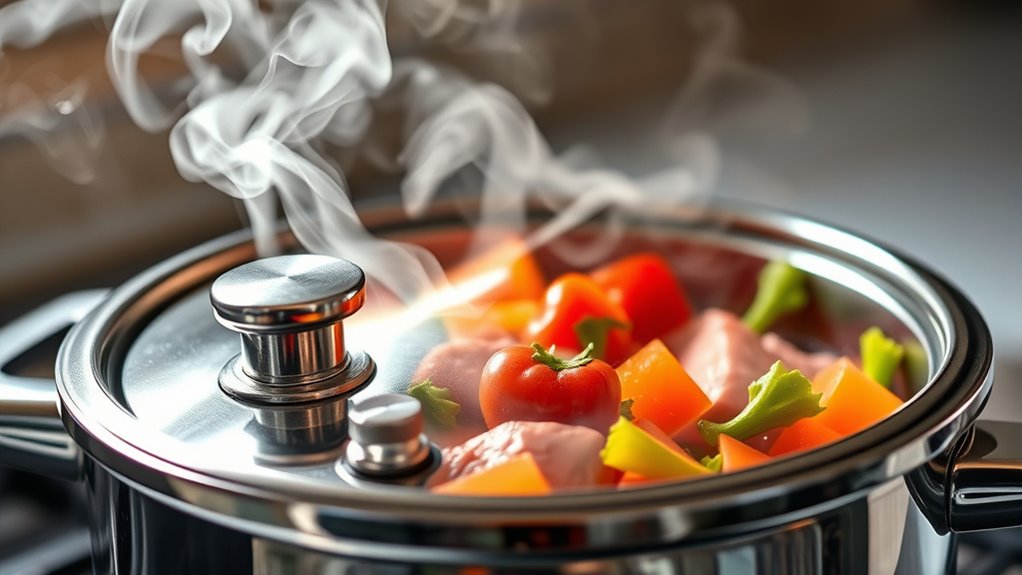
Have you ever wondered how a pressure cooker speeds up your cooking? It all comes down to steam pressure and heat transfer. When you lock the lid in place and turn on the heat, the water inside begins to boil. As it turns into steam, pressure builds up because the sealed environment traps the vapor. This increased steam pressure isn’t just a byproduct; it’s the driving force behind faster cooking. The high-pressure environment raises the boiling point of water above 212°F (100°C), which means heat transfer occurs more efficiently. Instead of waiting for the water to reach normal boiling temperatures, the cooker maintains a higher temperature, cooking food faster without drying it out.
A pressure cooker speeds cooking by using steam pressure to raise boiling point and enhance heat transfer efficiency.
The key to this process is how steam pressure enhances heat transfer. Under normal circumstances, heat is transferred from the stove to food through conduction, convection, and radiation. But in a pressure cooker, the elevated pressure means the steam surrounds the food at a higher temperature. This steam, acting as a heat transfer medium, efficiently surrounds and penetrates tough cuts of meat, breaking down connective tissues in a fraction of the usual time. The result is tender, flavorful meat that retains moisture because the sealed environment prevents evaporation. The steam pressure essentially accelerates the natural breakdown of collagen and other tough fibers, making them tender without the need for long cooking times or excessive liquid. Additionally, the pressure dynamics involved in this process help optimize heat transfer and cooking times. Maintaining the correct pressure levels is crucial to achieving the desired cooking results and safety.
Because the pressure cooker maintains a controlled environment, the heat transfer process becomes more consistent. The increased steam pressure ensures that heat is evenly distributed around the food, reducing hot spots and uneven cooking. This uniform heat transfer not only speeds up the cooking process but also helps retain flavors and moisture, preventing the drying out that often happens with traditional slow cooking methods. The sealed lid traps the steam, creating a humid environment that keeps meat moist and tender, even when cooking for a shorter period. Additionally, the use of advanced materials in modern pressure cookers enhances their ability to withstand higher pressures and distribute heat more evenly, further improving cooking efficiency. In principle, the magic of a pressure cooker lies in its ability to harness steam pressure to boost heat transfer. By raising the boiling point and creating a high-pressure environment, it accelerates the cooking process while preserving moisture and flavor. So, next time you’re tackling a tough cut, remember that the pressure cooker is working behind the scenes, using steam pressure and efficient heat transfer to turn that difficult meat into a tender, juicy dish in less time. Understanding pressure dynamics helps clarify why this method is so effective for tough cuts.
Frequently Asked Questions
How Does Pressure Affect Cooking Times for Different Meats?
You might wonder how pressure affects cooking times for different meats. By increasing pressure, you raise the boiling point, which speeds up cooking, especially for tougher cuts with less marbling. Using the right cooking techniques in a pressure cooker helps tenderize tough meats without drying them out. So, higher pressure shortens cooking time, making even lean or less-marbled meats tender and flavorful efficiently.
Can Pressure Cookers Be Used for Vegetarian Tough Cuts?
You can definitely use pressure cookers for vegetarian options and plant-based proteins. They’re great for tenderizing tougher veggie dishes like lentils, beans, or seitan, making them more flavorful and quicker to prepare. For hearty vegetarian stews or textured plant-based meats, pressure cooking speeds up the process without drying out the ingredients. Just adjust the cooking time based on the specific ingredient, and you’ll get perfectly tender, delicious vegetarian meals every time.
What Safety Precautions Are Essential When Using High-Pressure Settings?
Think of your pressure cooker as a spaceship—safety is your mission. Always check that the safety valve is clean and functioning properly, and guarantee the sealing ring is secure to prevent dangerous leaks. Never overfill the cooker, and follow manufacturer instructions for high-pressure settings. Regularly inspect these safety features, and never open the lid until the pressure releases completely. These precautions keep you safe while cooking efficiently.
How Does Altitude Influence Pressure Cooker Performance?
Altitude affects your pressure cooker’s performance because the boiling point drops as you go higher. You need to make altitude adjustments by increasing the pressure to compensate, ensuring your food cooks properly. At higher elevations, the cooker may need more time or higher pressure settings. By understanding how altitude influences the boiling point, you can adjust your pressure cooker’s settings for consistent, delicious results every time.
Are There Specific Pressure Levels Optimal for Tenderizing Tough Cuts?
This question is hotter than a volcano! You’ll want to find the perfect pressure levels for tenderization effects, typically around 10-12 psi. Higher pressure speeds up the breakdown of tough fibers without drying out your meat. Keep it too low, and you won’t get the tenderizing benefits; go too high, and you risk overcooking. Stick to recommended settings, and your tough cuts will transform into melt-in-your-mouth goodness.
Conclusion
Now that you understand how pressure cooker physics work, you can confidently tackle tough cuts without drying them out. Did you know that cooking under pressure can reduce braising time by up to 70%? That means you get tender, flavorful meat in a fraction of the time, freeing you to enjoy more of what you love. So, next time you face a tough cut, remember — pressure cooking transforms time and texture, making mealtime quicker and tastier.
